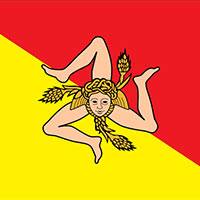Oratorio del SS. Rosario di San Domenico (Giacomo Serpotta)
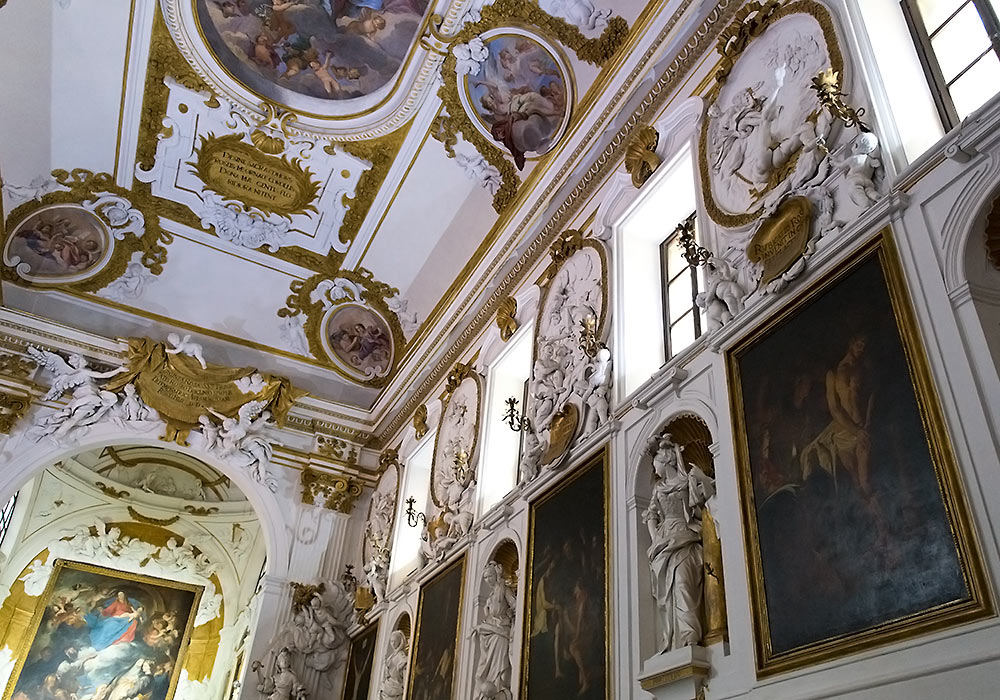
In the Oratorio del SS. Rosario di San Domenico, Serpottas stuccoes had to amalgamate to the existing paintings and merge with them visually and semantically. To the left you see Anthony van Dyck's large altarpiece The Madonna of the Rosary with Dominican Saints.
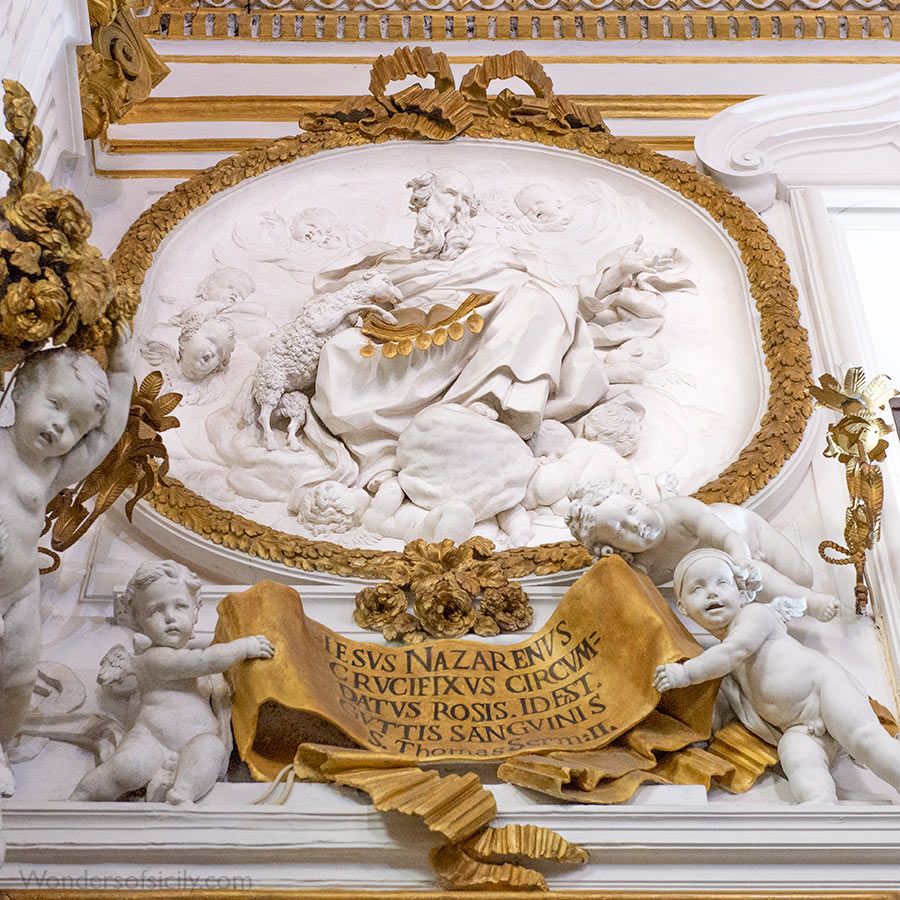
The Compagnia di S. Maria del Rosario delli Sacchi was founded by P. Marinao Lo Vecchio in 1568. Ten years later construction was begun on the present Oratory. In 1594 the rules of the company were approved by the Curia. The Compagnia was composed of members from the middle class, among whom were many rich merchants.
In 1628 the Flemish Baroque painter Anthony van Dyck (1599-1641, also known as Anthonis van Dyck etc.) sent the large altarpiece The Madonna of the Rosary with Dominican Saints; this painting (1624-28) can be seen in the Oratory today.
The famous painter Pietro Novelli (1603-1647) from Monreale was a member (confratello) of the Compagnia. Novelli painted the fresco on the vault, The Coronation of the Virgin, as well as two other paintings in the series of paintings of the Mysteries of the Rosary, consisting of works by Borremans, Luca Giordano, Mattia Stomer, Giacomo Lo Verde etc.
According to Garstang, the allegorical relationships between Serpotta's statues and reliefs and the painted decoration is extremely complicated and is based on a learned exegesis of the Apocalypse seen as an allegory of the life of Christ.
Source: Donald Garstang: Giacomo Serpotta and the Stuccatori of Palermo 1560-1790
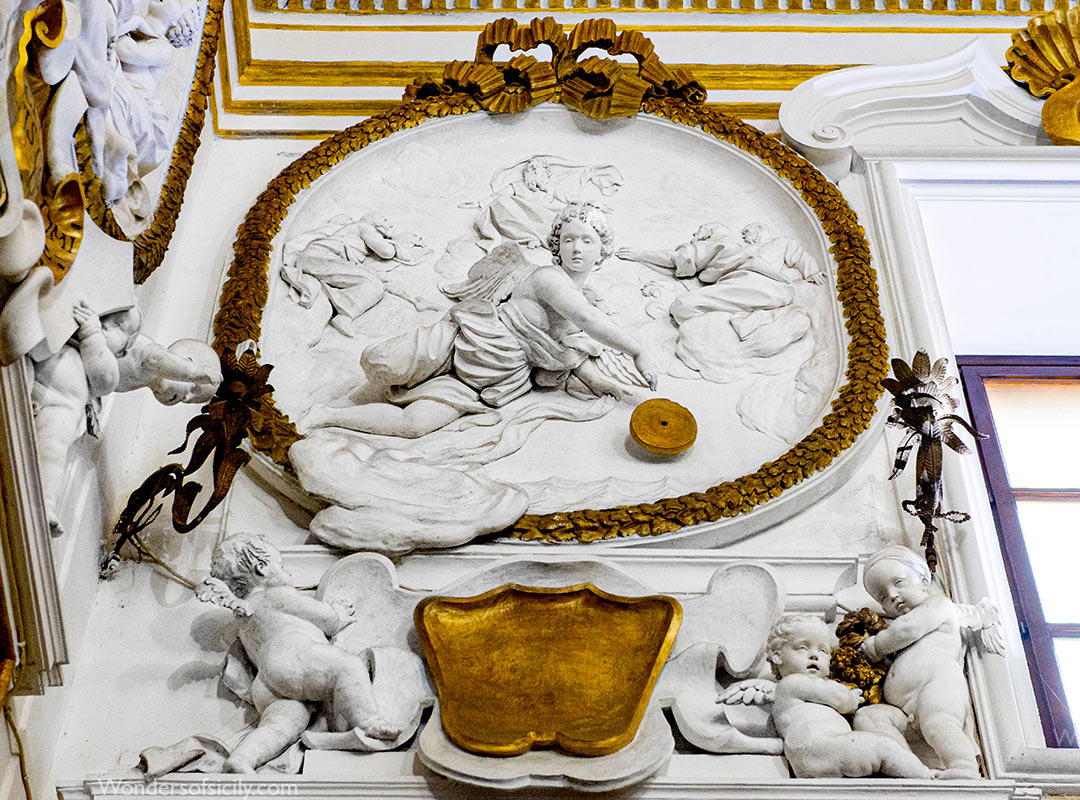
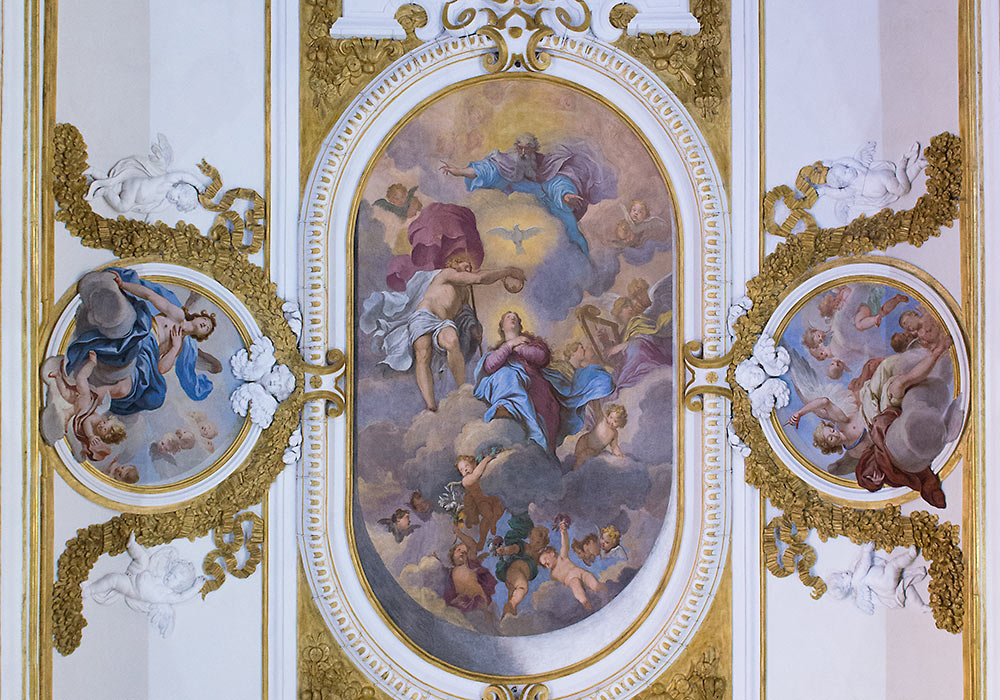
The painter Pietro Novelli (1603-1647) from Monreale was a member of the Compagnia. He painted the fresco on the vault, The Coronation of the Virgin.
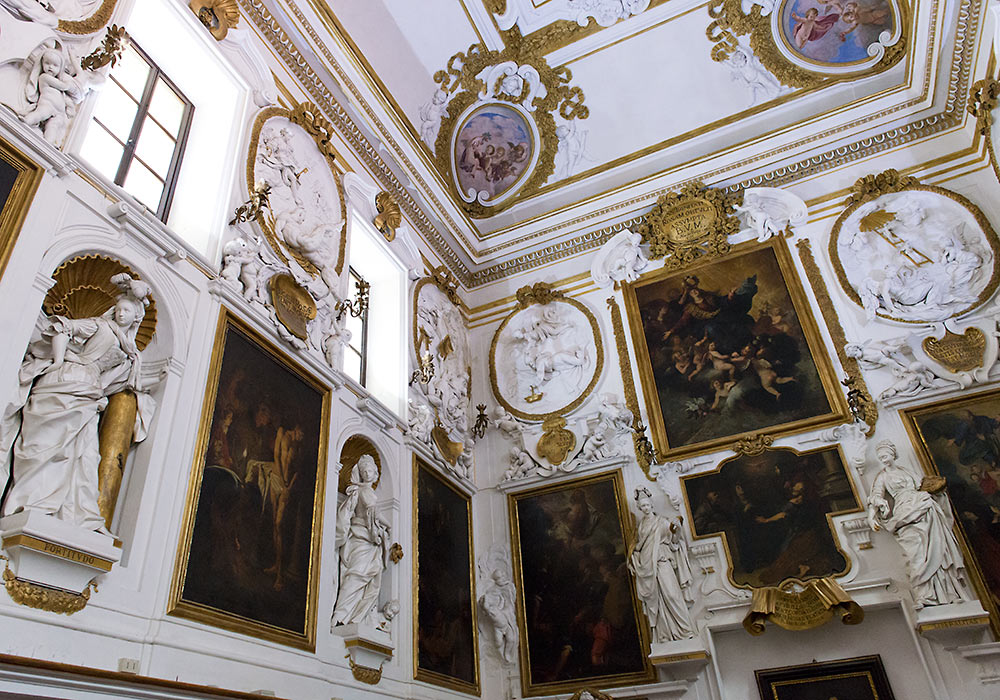
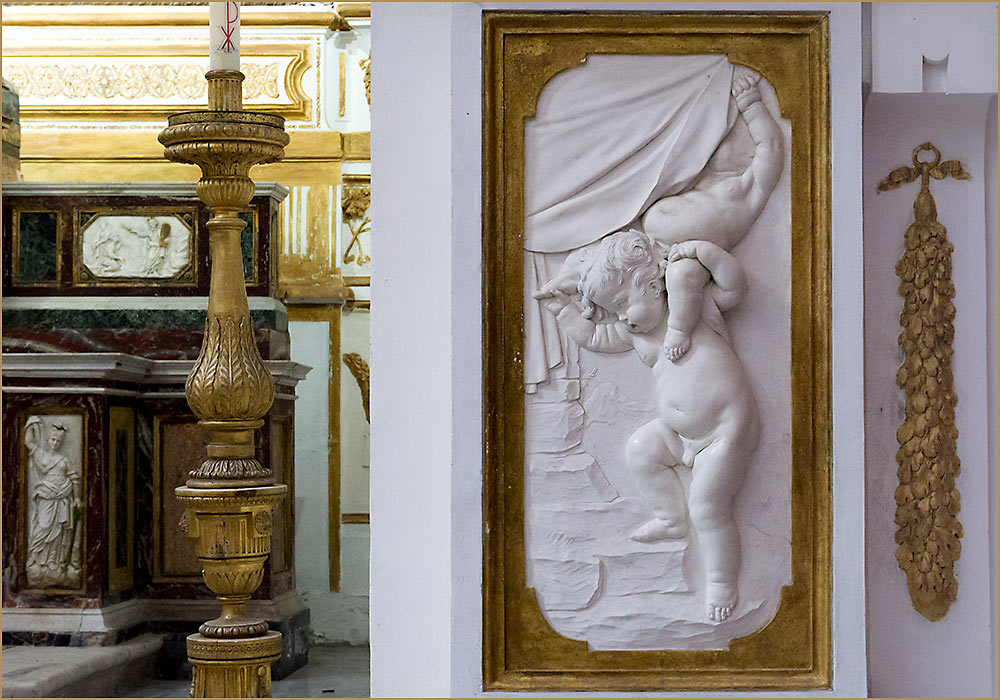
Those Mischievious kids! Stucco relief in Oratorio del SS. Rosario in San Domenico.
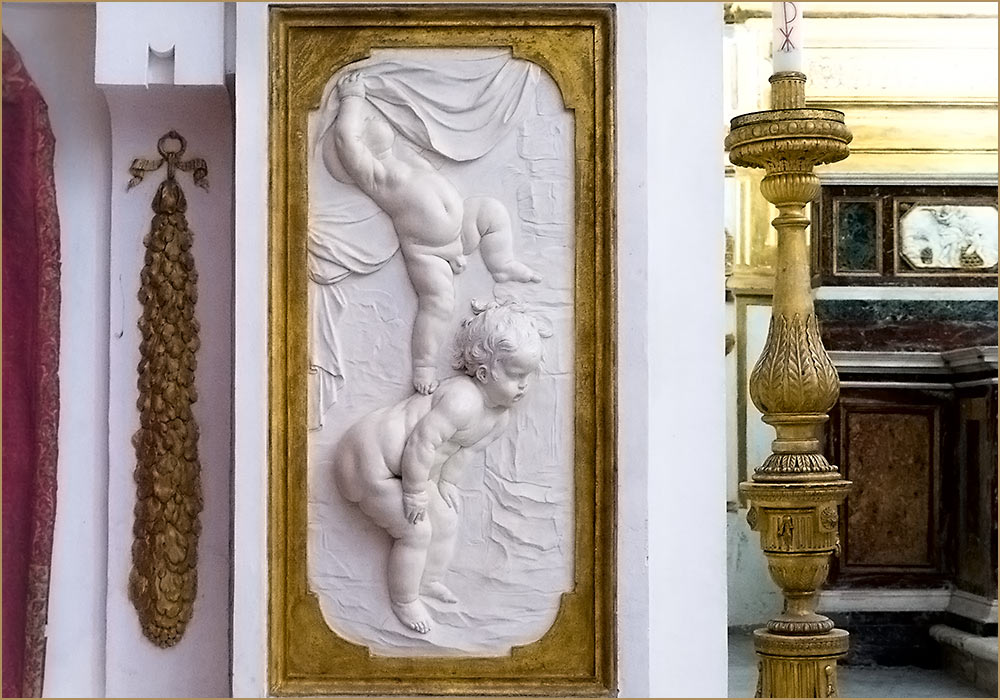
Stucco relief in Oratorio del SS. Rosario in San Domenico.
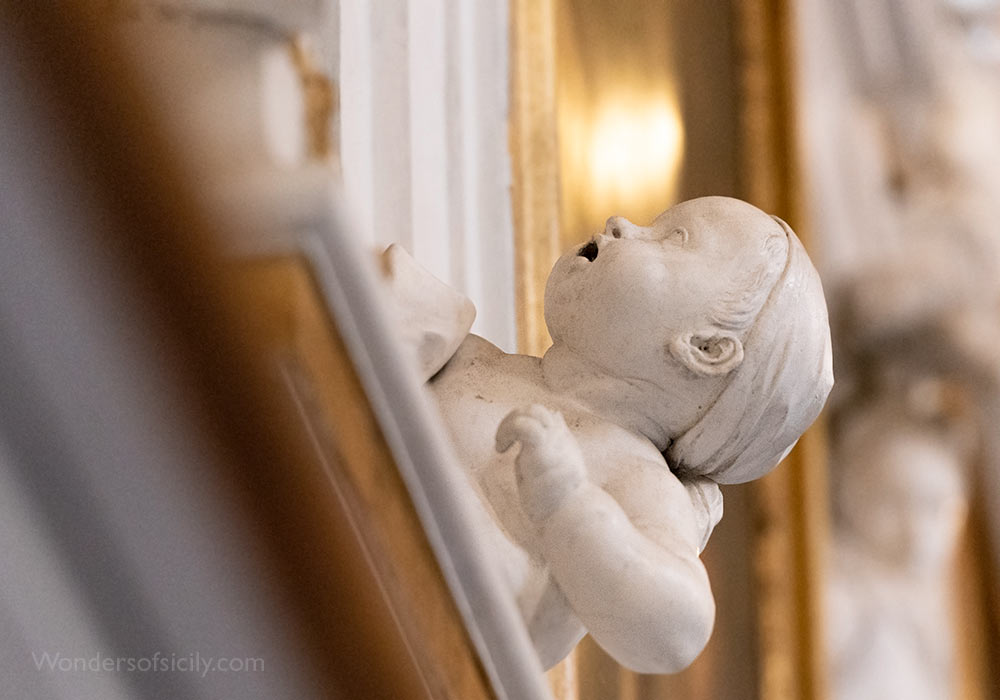
A curious boy in Oratorio del SS. Rosario di San Domenico, Palermo.
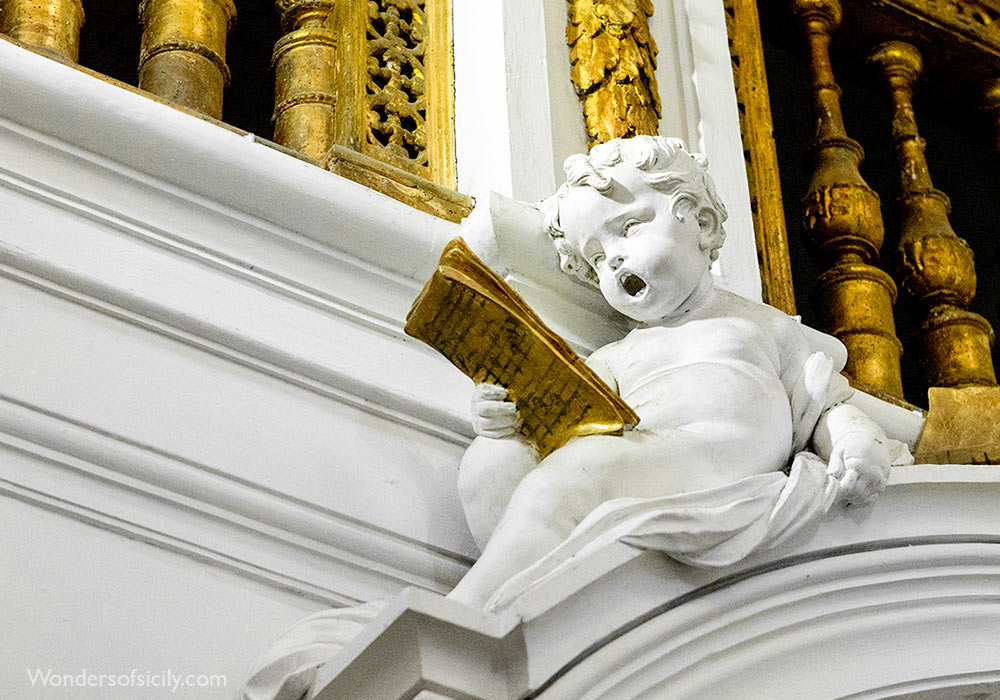
Putto cantore.
Confraternities in Italy
During the Catholic Reformation, six standard models of confraternities emerged as prominent devotional and charitable groups across the Italian peninsula. These include:
- Confraternities of the Most Holy Sacrament (SS. Sacramento or Corpo di Cristo): Focused on the Eucharist and its veneration.
- Name of God Confraternities (Nome di Dio or Nome di Gesù): Centered on the glorification of God's name.
- Confraternities of Charity (di carità or S. Girolamo della carità): Dedicated to works of mercy and assisting the poor and sick.
- Confraternities of Christian Doctrine (della dottrina cristiana): Emphasized teaching the faith and catechesis.
- Rosary Confraternities (del SS. Rosario): Focused on Marian devotion through the recitation of the Rosary.
- Marian Congregations (congregazioni mariane): Concentrated on honoring the Virgin Mary in various forms of piety.
The Rosary Confraternities in Italy
The Rosary confraternities were among the most devotional in nature, requiring minimal commitment beyond the regular recitation of the Rosary, often called the “Psalter” of the Virgin Mary. Their foundation was rooted in the following:
-
Origins and Growth:
- The practice of reciting repetitive prayers like the Ave Maria originated in the 12th century.
- By the early 15th century, Carthusians Dominic of Prussia and Adolf of Essen developed the practice of combining meditations on Christ’s life with the prayers, which gained momentum.
- The Dominicans Alain de la Roche and Jakob Sprenger established the first Rosary confraternities in Douai (1470) and Cologne (1475), respectively.
- In Italy, German Dominicans founded Rosary confraternities in Venice (1480) and Rome (S. Maria sopra Minerva, 1481), which then spread widely.
-
Papal Recognition:
- Popes Sixtus IV, Innocent VIII, and Leo X enriched these confraternities with indulgences in the 1480s.
- Pope Pius V, a Dominican and devoted Rosary practitioner, expanded indulgences further and elevated the S. Maria sopra Minerva confraternity to the status of an Archconfraternity in 1569.
- Pius V attributed the 1571 Christian victory at Lepanto to the Virgin Mary's intercession, instituting the Feast of "Our Lady of Victory," later renamed "Our Lady of the Rosary."
-
Devotional Practices:
- Members were required to regularly recite the Rosary while meditating on key events in Christ’s life.
- These confraternities were integral to spreading Catholic Reformation spirituality, with Dominicans playing a leading role in promoting Marian devotion through writings and treatises.
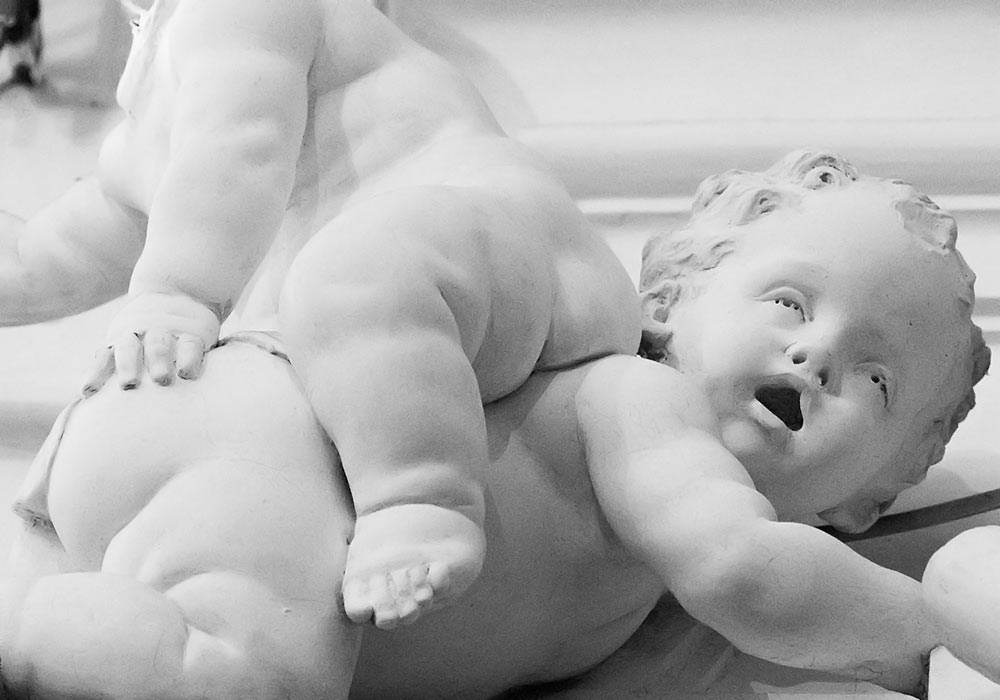
Stucco putti by Giacomo Serpotta (1656-1732) in Oratorio del SS. Rosario di San Domenico, Palermo.
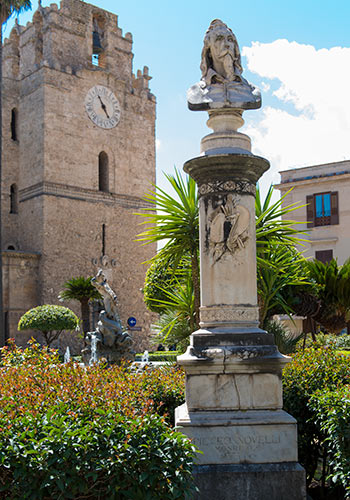
Statue of the painter Pietro Novelli outside the cathedral in Monreale. Novelli was born in Monreale, and was active mainly in Palermo. He was nicknamed by contemporaries as the Raphael of Sicily. Novelli was a member of the Compagnia di S. Maria del Rosario delli Sacchi (Oratorio del SS. Rosario di San Domenico).
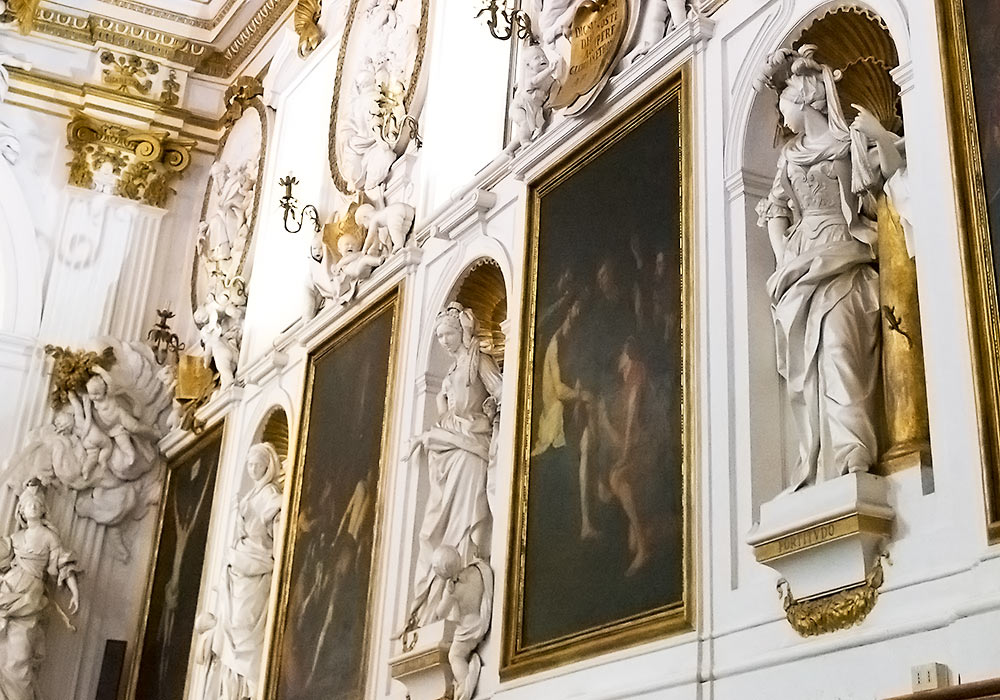
On the golden column to the right, you can see a lizard - Serpotta's signature. ('Sirpuzza' means a small serpent in Sicilian dialect.)
Where to Find the Most Important Serpotta Oratorios in Palermo
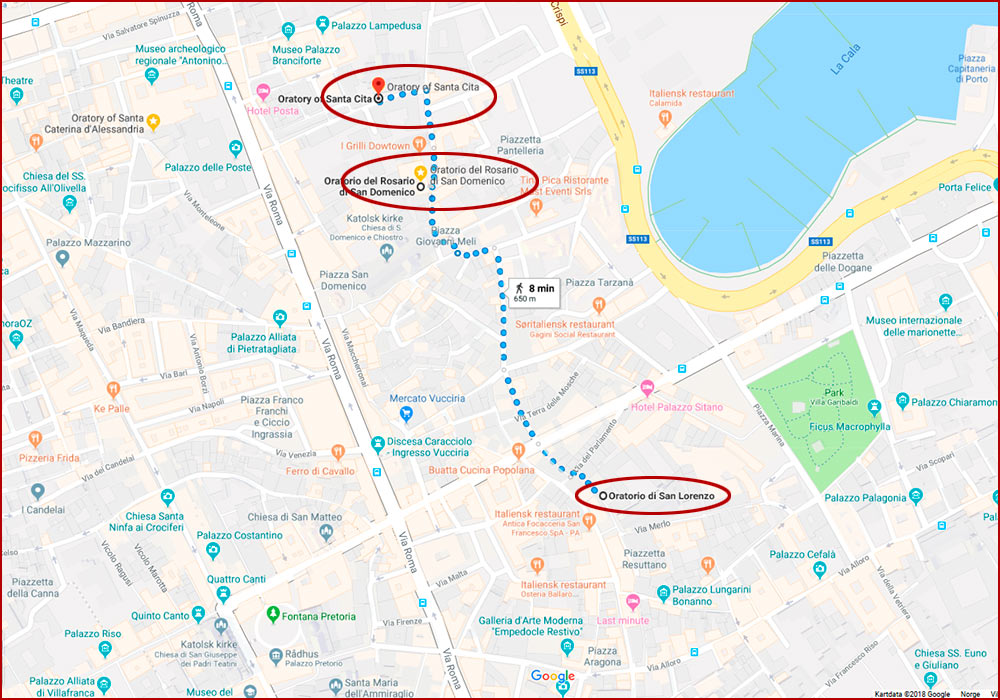
The Serpotta Oratories in Palermo
Oratorio of Santa Cita (1668–1718)
Oratorio of San Lorenzo (1690/98–1706)
Oratorio di San Domenico (1710–17)
Oratorio di Santa Caterina D’Alessandria
Oratorio di San Mercurio (1677–82)
The Serpotta workshop’s art is analyzed by Donald Garstang in Giacomo Serpotta and the Stuccatori of Palermo 1560–1790.
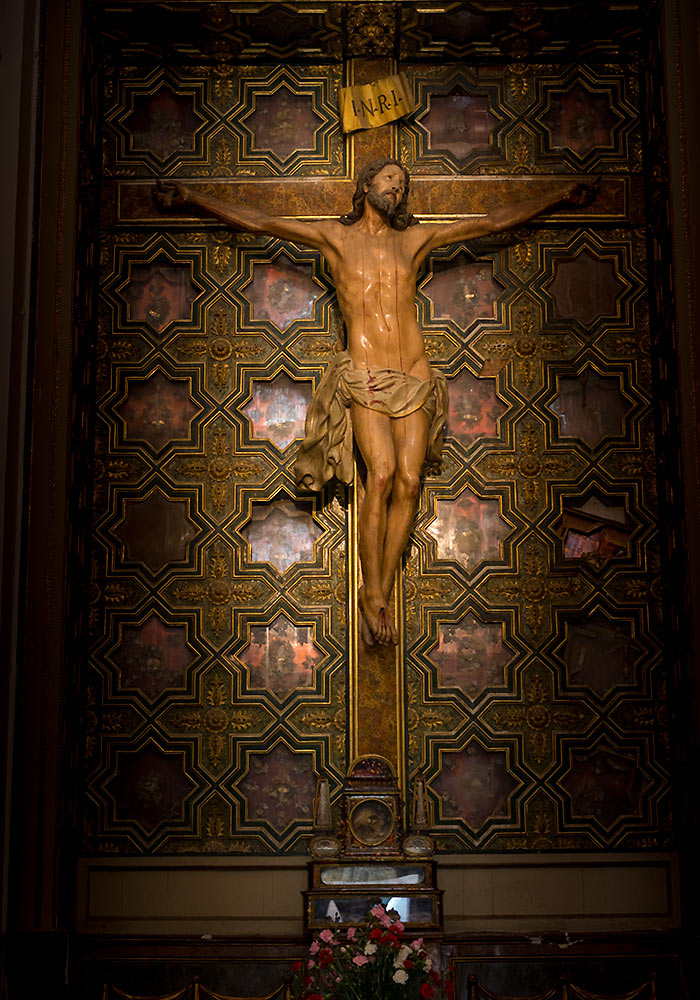
Crucifix with relics (Crocifisso reliquiario) in Oratorio del SS. Rosario di San Domenico, Palermo. You can see the relics behind the glass.
Main source
Donald Garstang: Giacomo Serpotta and the Stuccatori of Palermo 1560-1790

